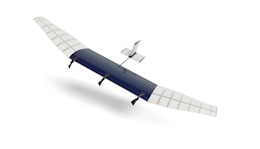The GSMA director general has attacked Facebook’s plans to use drones to connect the unconnected as “scary”, claiming terrorists could mistake them for military devices and try to shoot them down.
Anne Bouverot was equally contemptuous of Google’s plans to use balloons for the same reason, claiming they were impractical. She also said the use of satellites to connect those without internet access also had questions facing it.
The DG made the comments at the launch of the DigiWorld Yearbook 2014 in London this week, which found operators continue to be under threat as revenues decline.
[Read more: Operators in need of an answer as they ask ‘from despair to where?’]
Google and Facebook have come in for criticism from telcos, who claim the digital companies are profiting off the back of mobile networks. Both companies have announced initiatives to bring internet connectivity to those who do not have it.
Facebook has internet.org and is planning to use solar-powered drones, satellites and free space optical technology to connect people. Google recently bought Titan Aerospace, a company that builds solar powered drones and also runs Project Loon, which aims to bring the internet to people via high altitude balloons.
Bouverot was sceptical of both, suggesting they were motivated by marketing, rather than altruism. She said: “What they want is more internet users. The more they have, the bigger the base for their advertising revenue. Where we don’t have a population using the internet is the developing market…It’s a business reason that drives them there first but it’s a very good thing to get people access to the internet.”
She was dismissive of using balloons to connect people, saying weather would interfere with signals and there were question marks over how long a balloon could stay in the air. But she saved her strongest comments for Facebook’s drone programme.
“They are scary devices. If you are in Nigeria and are part of a terrorist group, you might try and shoot it down even though it’s a telecoms device,” she said.
Bouverot added that satellite technology could serve a purpose but were not needed in the face of mobile networks: “Today 85 percent of the world’s population is within coverage of a mobile network. This will only increase. One problem [facing the mobile industry] is getting more coverage but there is a wider problem regarding the affordability of handsets.”



